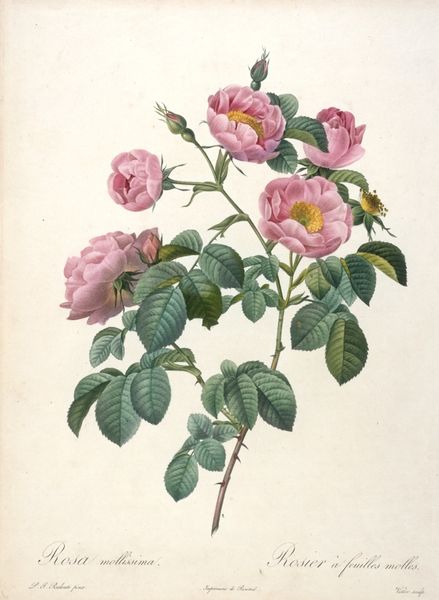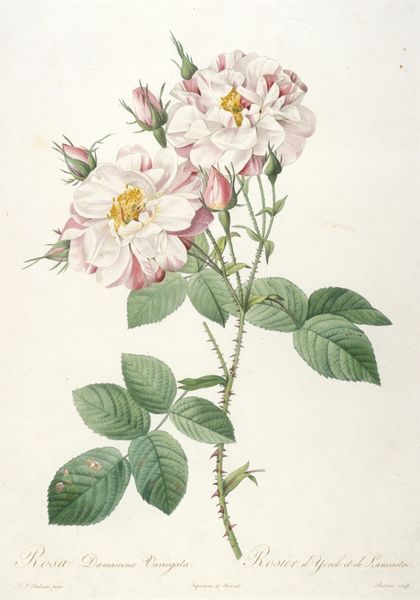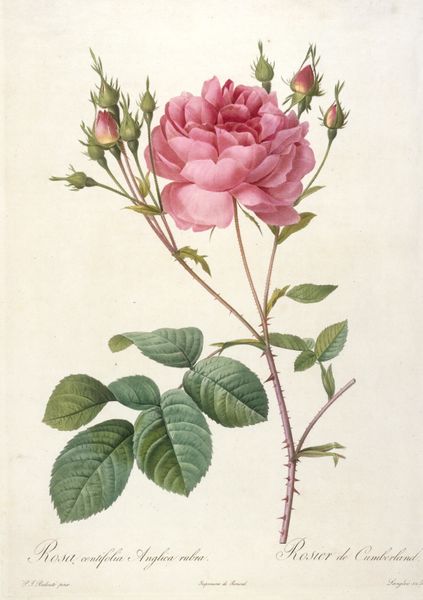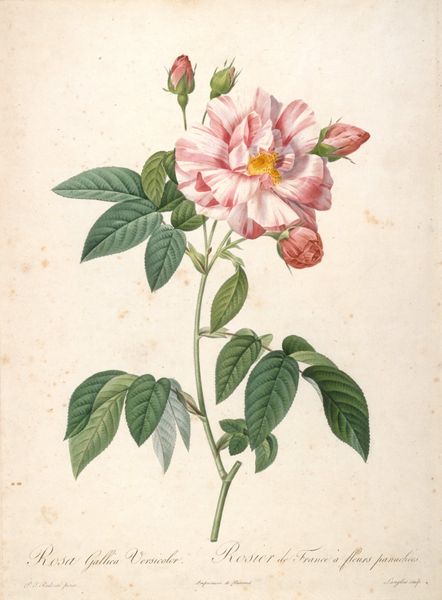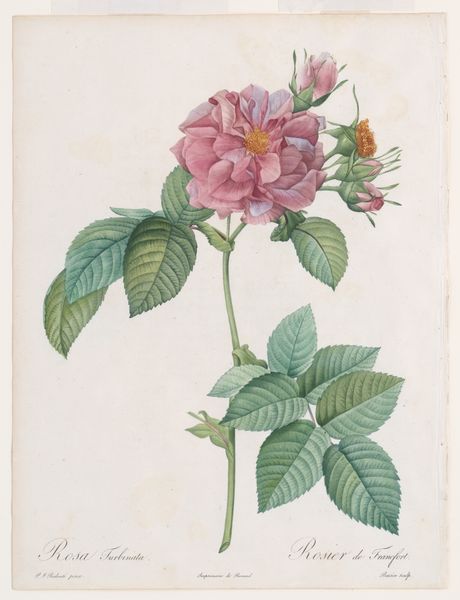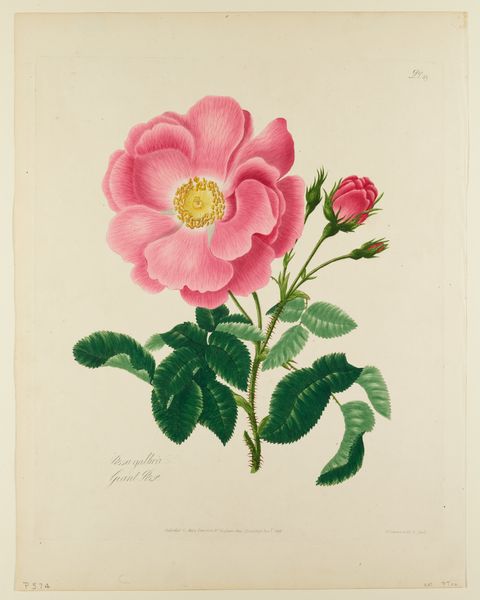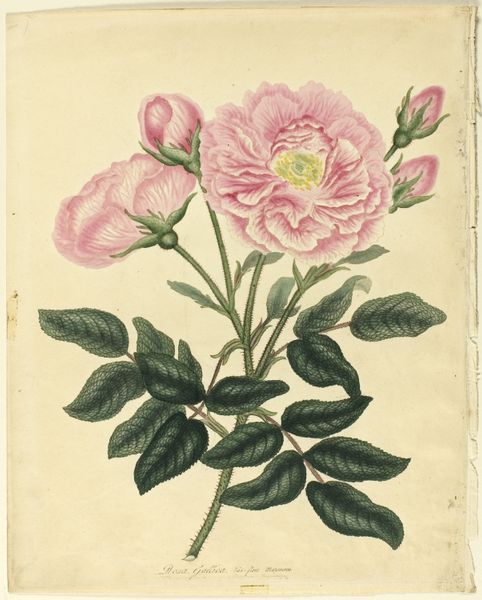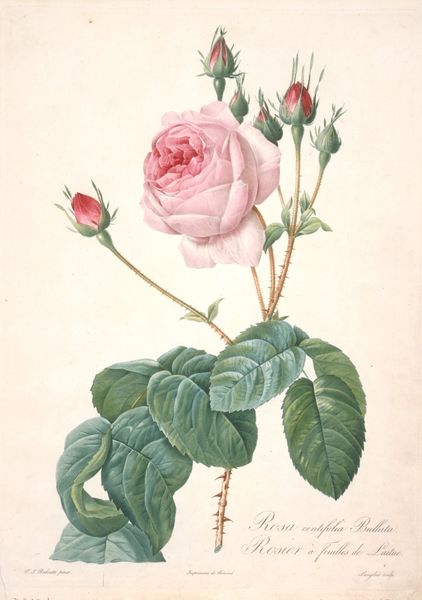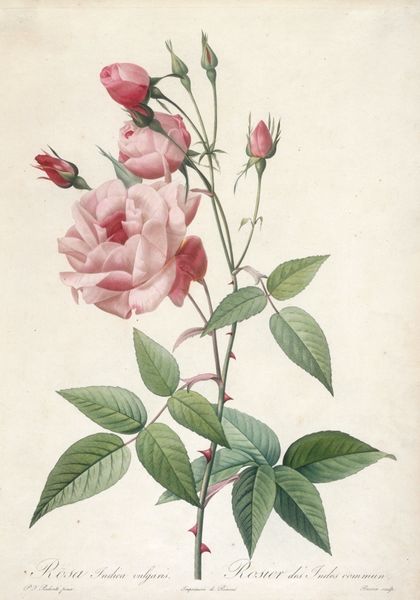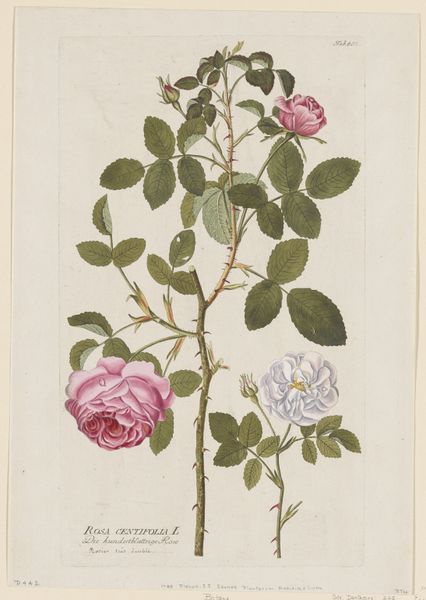
drawing, print, watercolor
#
drawing
# print
#
oil painting
#
watercolor
#
romanticism
#
watercolour illustration
#
botanical art
#
watercolor
Dimensions: 13 7/8 x 10 in. (35.24 x 25.4 cm) (plate)
Copyright: Public Domain
Editor: Here we have "Rosier d'Amour", or "Rose of Love," a watercolor and print made sometime between 1817 and 1824. I find its meticulous detail and delicate color palette really charming. What stands out to you about this piece? Curator: Looking at it, I’m drawn to think about the physical process of its creation. The combination of printmaking with watercolor suggests a very deliberate, almost industrial mode of artistic production, right? Editor: Industrial? How so? It seems very… delicate. Curator: Well, consider the print aspect. This implies reproduction, circulation. It removes the unique, auratic quality we often associate with high art. What kind of audience was envisioned for these prints? Were they luxury items, scientific illustrations, or something else entirely? What does the name on the work tell us? How did it disseminate information in 1820s? Editor: That's an interesting way to look at it! So, you are saying the beauty is almost beside the point, and that it is actually about the process and the accessibility? Curator: Not beside the point, no, but definitely intertwined. Romanticism often idealized nature, but even then, production and consumption were deeply embedded. I see the artist’s labour being part of industrial development and botanical study rather than only ‘art’. How does its materiality—the paper, the watercolor, the printed lines—contribute to our understanding of its place in society? Editor: I see what you mean. I hadn’t considered the "production" side of something that seemed so idyllic. It is strange to realize this has something to do with economy. Curator: Precisely. It reminds us that art, even something as seemingly simple as a floral print, is always tied to its material and economic context. It is a good point to remember next time.
Comments
No comments
Be the first to comment and join the conversation on the ultimate creative platform.

